This post may contains affiliate links. Read our full disclosure here.
Tired of always being glued to your phone? Trust me, I get it. A digital detox isn’t about swearing off technology forever or missing important updates. It’s about finding that sweet balance between staying connected and reclaiming peace of mind. The constant notifications, endless scrolling, and digital rabbit holes can turn your trusty phone from helpful tool into a stress-inducing time vacuum.
When I first tried a digital detox, I worried about missing out on everything. What if someone needed me? What if I missed an important email? But what I discovered was something far more valuable—mental space, better sleep, and genuine connections. This guide will walk you through how to unplug without truly missing anything important, creating boundaries that work with your actual life, not against it.
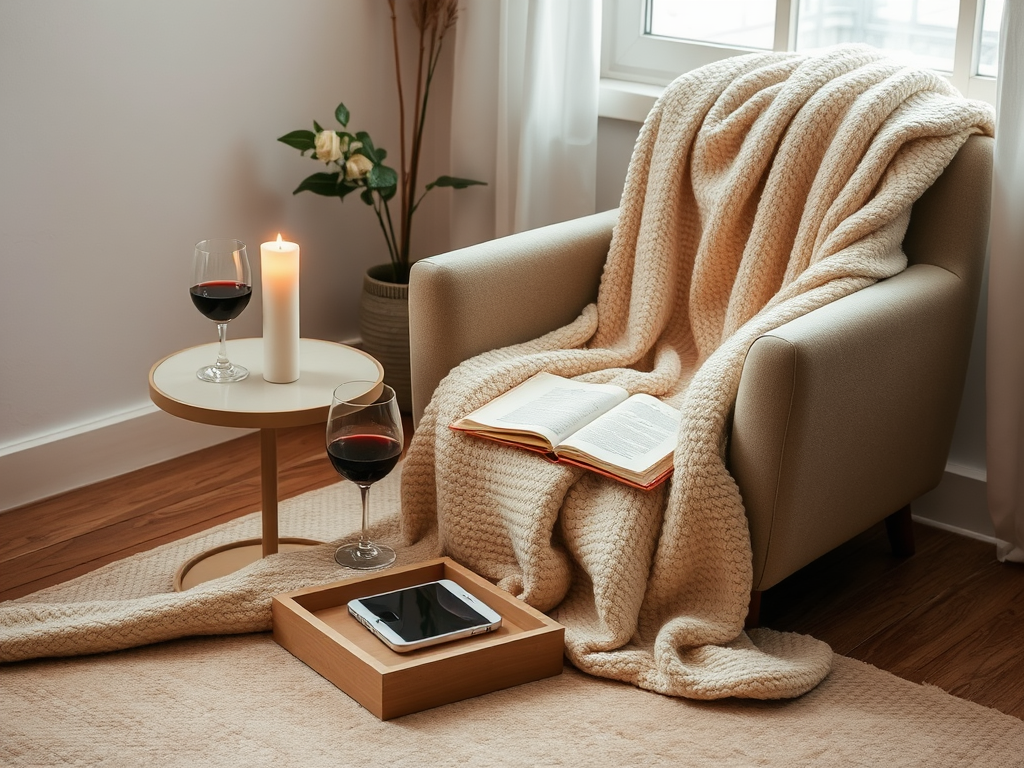
Signs You’re Overdue for a Digital Detox
Remember when you’d wake up and actually look out the window instead of checking Instagram? The signs you need to unplug can be subtle until suddenly they’re not. I noticed my own red flags when I started feeling anxious whenever my phone wasn’t within arm’s reach. The constant need to check notifications had become an automatic reflex rather than a conscious choice.
According to research from Harvard Medical School, our brains aren’t designed for the non-stop stimulation of digital life. Those dopamine hits from notifications create real addiction patterns—just like the ones from addictive substances. A study published in BMC Public Health found that screen time beyond two hours daily significantly impacts mental wellbeing, especially for women. If you’re feeling irritable without your phone or struggling to focus on conversations happening right in front of you, your brain might be telling you it needs a break.
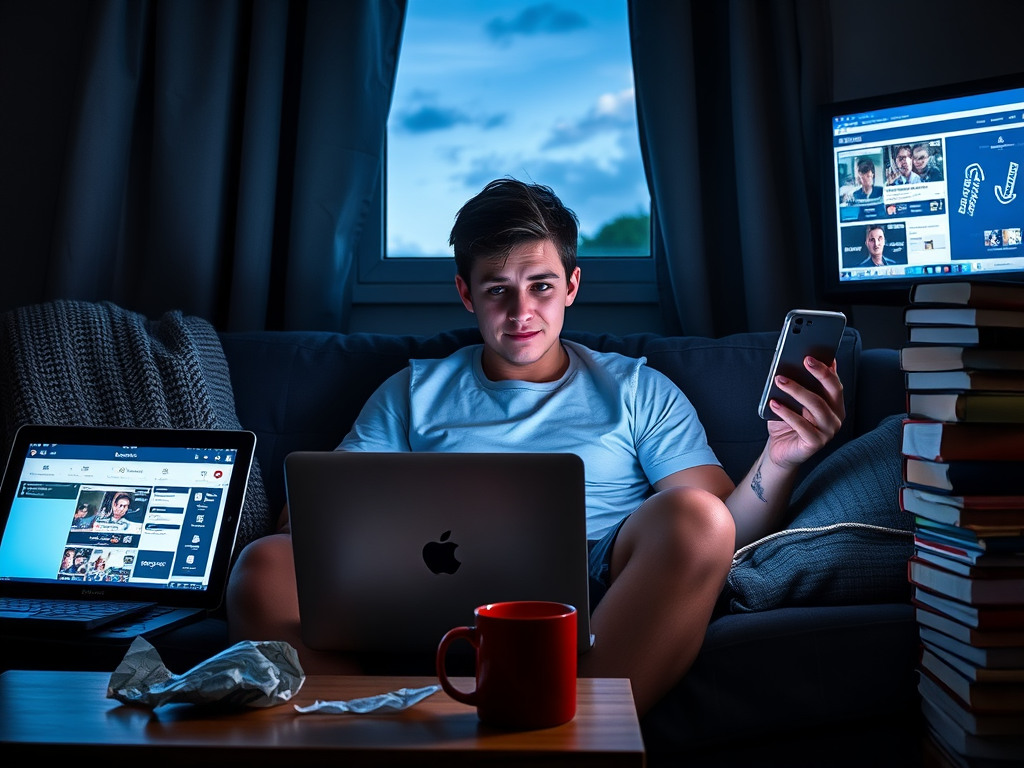
Want to know if you’re due for a digital detox? Watch for these tell-tale signs:
- You check your phone within five minutes of waking up
- You feel phantom vibrations when your phone isn’t even on you
- You struggle to complete tasks without checking social media
- Your sleep quality has noticeably declined
- You feel anxious when your battery is low or you’re without service
For a quick reality check, try the Center for Humane Technology’s assessment. It’s an eye-opening way to gauge how technology might be affecting your wellbeing.
Creating a Digital Detox Plan That Actually Works
The best digital detox is one that fits your real life—not some unrealistic “throw your phone in the ocean” approach. When I decided to cut back on screen time, I knew cold turkey wasn’t going to work with my job and social life. Instead, I created smaller boundaries that still made a huge difference. This approach is similar to creating work-life balance strategies that don’t require completely abandoning your career to find peace.
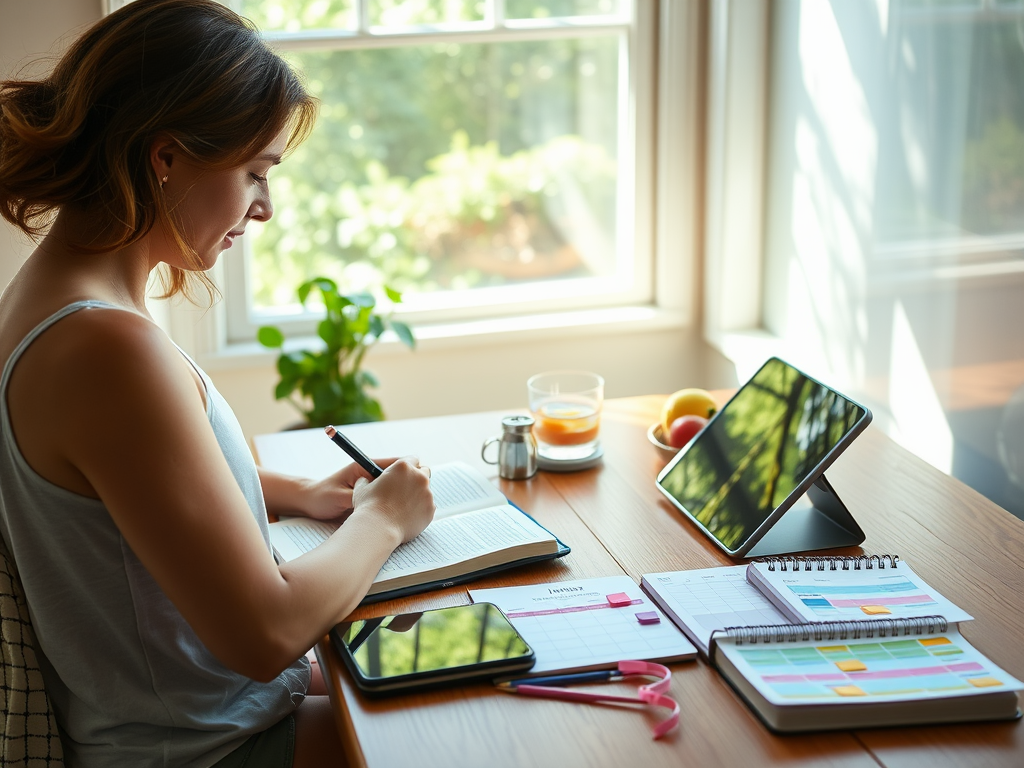
Start with phone-free zones in your home. My first change was making my bedroom a no-phone sanctuary after 9 PM. This small boundary improved my sleep quality dramatically within just a few days. The blue light from screens disrupts melatonin production, which explains why scrolling before bed makes falling asleep so much harder. Your bedroom should be a screen-free sanctuary where your Scandinavian sleep method or other relaxation techniques can truly work.
Here’s how to create a digital detox plan that sticks:
- Start with one screen-free hour each morning (try reading or journaling instead)
- Use built-in tools like Screen Time (iPhone) or Digital Wellbeing (Android) to set app limits
- Turn off non-essential notifications (do you really need to know immediately when someone likes your post?)
- Try the grayscale display setting—it makes your phone significantly less appealing
- Schedule specific check-in times for email and messages rather than constant monitoring
Filling The Void: What To Do During Your Digital Detox
The hardest part of a digital detox isn’t putting down your phone—it’s figuring out what to do with yourself instead. This is where the real transformation happens! When I first started my detox journey, I rediscovered my love for watercolor painting, something I hadn’t touched since college. Those evening hours I’d normally waste scrolling through TikTok turned into my creative time, and honestly, I felt more fulfilled than any viral video had ever made me feel.

A University of Pennsylvania study found that limiting social media use to just 30 minutes per day significantly reduced feelings of loneliness and depression. The researchers noted that participants who cut back reported feeling more present in their daily lives and more engaged in face-to-face interactions. This might explain why my boyfriend commented that I seemed “more here” during dinner conversations after starting my detox.
Try these screen-free activities that actually feel rewarding:
- Create a cozy reading nook with plush pillows and good lighting
- Try a wine tasting journal where you note flavors and pairings
- Take up a hands-on hobby that requires focus (knitting, woodworking, cooking)
- Implement minimalist home organization techniques to create a calmer space
- Start a letter-writing practice with friends (receiving actual mail feels amazing)
How To Stay Connected Without The Digital Overwhelm
The biggest objection I hear about digital detoxes is the fear of missing something important. Let’s be honest—nobody wants to miss their friend’s birthday or an urgent work matter. The key is creating systems that let important things through while filtering out the noise. This doesn’t mean you have to completely disconnect, just that you’re more intentional about how and when you connect.
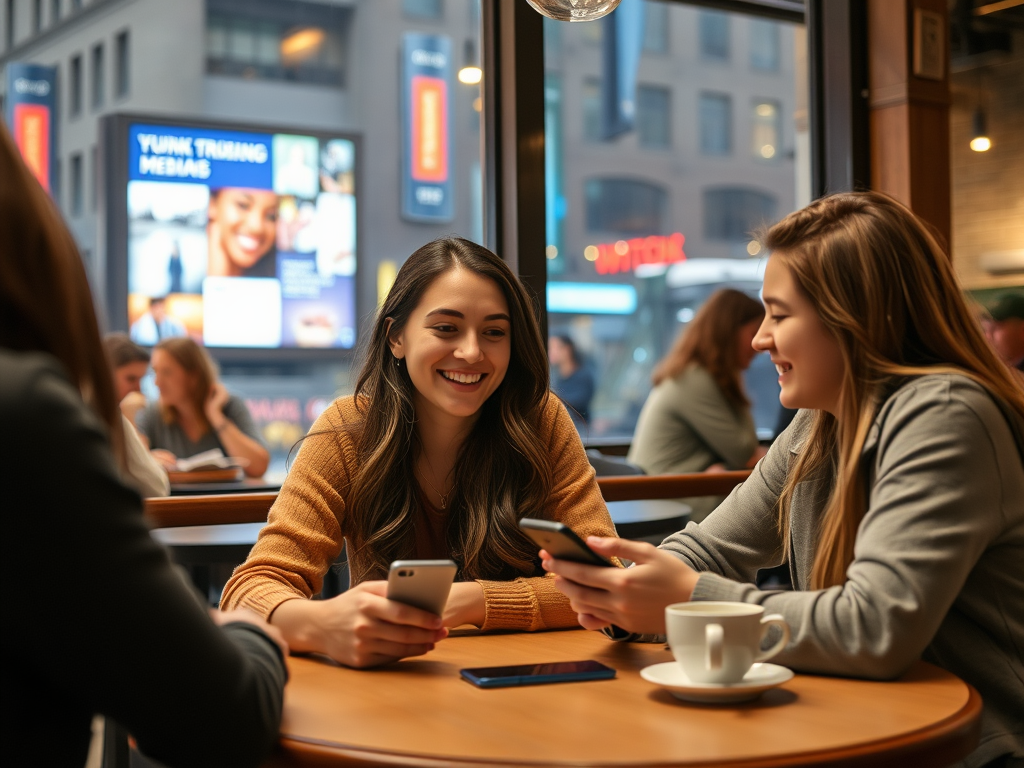
The Mayo Clinic recommends structured digital breaks where you communicate your availability to others. Before my weekend detoxes, I send a quick text to close friends and family letting them know I’ll be checking messages at certain times. I’ve also set up special ringtones for my inner circle so their calls come through even when my phone is on Do Not Disturb mode. What’s surprising? Most people respect these boundaries and even admire them.
Smart ways to stay connected while unplugging:
- Set up auto-replies for emails during your detox periods
- Use the VIP or Favorites feature on your phone for critical contacts
- Schedule specific check-in windows (10 AM and 4 PM works well for me)
- Create “if-then” rules with close contacts (“If it’s urgent, call twice in a row”)
- Consider a productive home office environment with dedicated tech times and tech-free zones
Dealing With Digital FOMO During Your Detox
Let’s talk about the elephant in the room: FOMO (fear of missing out). It’s that nagging anxiety that while you’re enjoying your digital detox, the group chat is popping off with inside jokes, or your favorite influencer dropped life-changing content. This fear keeps many of us tethered to our screens despite knowing we need a break. But here’s the truth: most of what we worry about missing isn’t actually meaningful.

Stanford researchers found that social media creates an illusion of missing experiences that aren’t actually significant to our overall happiness. When I felt FOMO creeping in during my first weekend detox, I started journaling about what exactly I feared missing. Looking back at those entries now is eye-opening—almost none of those “can’t miss” moments mattered even a week later. Incorporating morning routines of successful women who prioritize mindfulness over social media has helped me reframe what truly matters.
How to combat digital FOMO:
- Keep a FOMO journal to track what you actually missed (you’ll be surprised how little matters)
- Remember that social media shows highlights, not reality
- Plan meaningful in-person gatherings during your detox time
- Ask a friend to notify you only of truly important updates
- Focus on the fear of missing out on real life by staying glued to your phone
Making Your Digital Detox a Sustainable Lifestyle
A digital detox isn’t meant to be a one-time cleanse—it’s about creating a healthier relationship with technology for the long haul. After my first successful weekend unplugged, I realized I needed ongoing boundaries to maintain the benefits. Now I practice what I call “digital minimalism”—using technology purposefully rather than mindlessly. This approach has transformed how I interact with my devices without making me feel deprived.
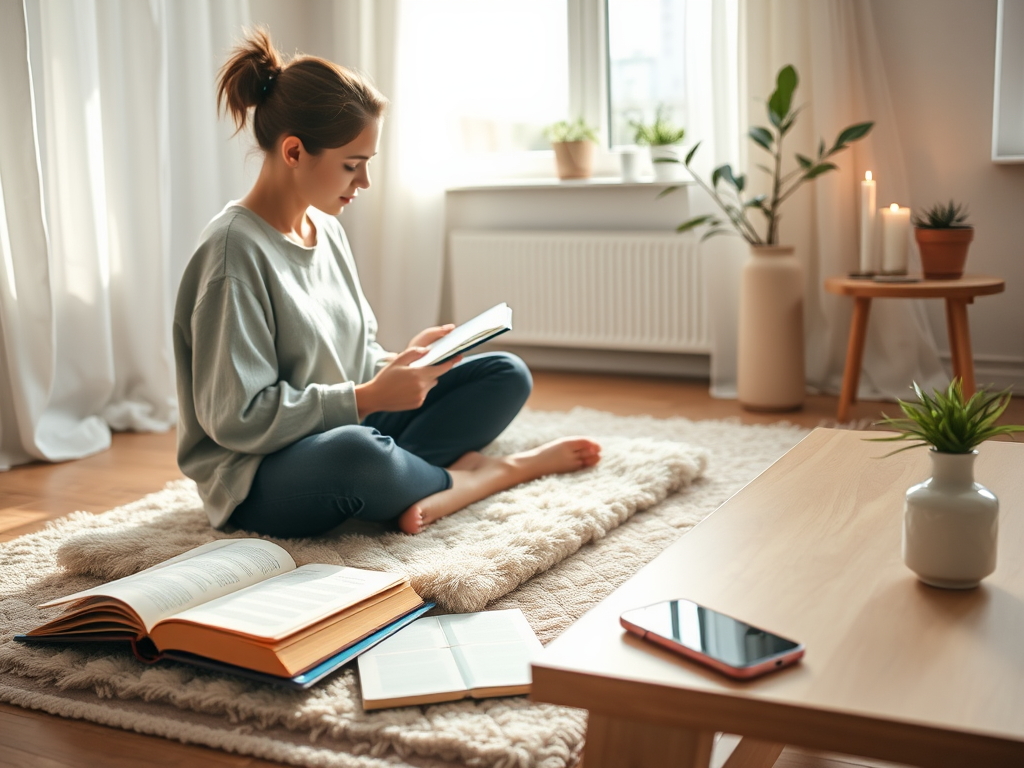
The key is consistency with reasonable boundaries. My non-negotiables include no phones at the dinner table, no social media before 10 AM, and a full tech shutdown one hour before bed. These rules aren’t perfect—sometimes work emergencies happen, or I’m waiting for an important call—but sticking to them 80% of the time has made a noticeable difference in my mental clarity and relationships.
Sustainable digital wellness practices:
- Conduct a monthly app audit—delete what you don’t genuinely need
- Establish tech-free times that your household respects (meals, mornings, evenings)
- Create physical distance between you and your devices (charge phones in another room)
- Use a real alarm clock instead of your phone
- Practice a weekly reset day with minimal tech use (mine is Sunday)
Your Digital Freedom Starts Now
Taking control of your digital life doesn’t require dramatic measures—just small, consistent steps toward mindfulness. A digital detox gives you the space to remember what actually matters to you beyond the endless scroll. The first few hours might feel weird (I checked my empty pocket about 50 times during my first detox!), but that discomfort quickly transforms into liberation.
What I’ve found most surprising about my digital detox journey is how much richer everyday moments have become. That glass of wine on my porch actually tastes better when I’m fully present. Conversations with friends have more depth. My home feels more like a sanctuary than a workspace. And ironically, I feel more connected to people who matter despite being less “connected” online.
Start your own digital detox this weekend. Turn off notifications, put your phone in a drawer, and rediscover what it feels like to be fully present. Notice the little things—how your coffee smells, the way sunlight hits your living room, the sound of your loved ones’ voices without the competition of pings and alerts. Your digital world will still be there when you return, but you might just find you need it a little less than you thought.
The most beautiful thing about unplugging? You get to choose how and when to reconnect—on your terms, not your phone’s. That kind of freedom is worth far more than any viral video or breaking news alert could ever be.




